Hasegawa's 1/72 scale
Grumman F-14A
VF-1 Wolfpack
by Roland Sachsenhofer
|
Grumman F-14A/ VF-1 Wolfpack |

The F-14 model is the third part in a small series of five Tomcats that I am building in 1/144, 1/72 and 1/48 scale. The history of Grumman's spectacular carrier fighter is rich enough in variations and stories that there is room for five different and interesting interpretations in any case. This F-14A Tomcat of the Vf-1 Wolfpack, for example, represents a carrier-based task group more closely associated with the Tomcat's history than any other.
About VF-1 "Wolfpack
The naval aviation squadron VF-1 "Wolfpack" was established together with the "Bounty Hunters" of VF-2 at Naval Air Station NAS Miramar from October 1972 as the first units for the new F-14s that had just entered service. The first Tomcats arrived in July 1973 and the unit was able to familiarise itself with them until late summer 1974.
The first operational tour was on board the USS Enterprise as part of the Carrier Air Wing 14 (CVW-14) to the scene of a real hot war. From September 1974 until April of the following year, the F-14s secured the airspace over the evacuation zones of the American troop units withdrawing from Vietnam. VF-1's Tomcats were also seen over Saigon during the dramatic final evacuations of Operation Frequent Wind.
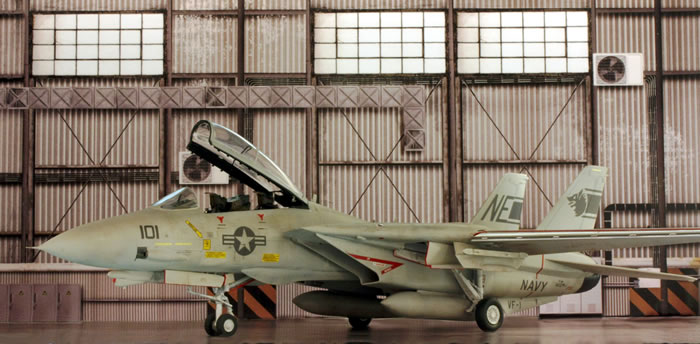
The USS Enterprise remained the home of the Wolfpack for the following operational tours. It was only on the occasion of the "Mid Life Conversion" of the large carrier, which began in 1979, that VF-1, like her sister unit VF-2, switched to the carrier group CVW-2. In the process, the "Wolfpack" met the ship that was to remain associated with her name until her dissolution: in September 1980, VF-1 and VF-2 transferred to the USS Ranger.
By the time the first Tomcats arrived on the USS Ranger, the carrier was already a well-aged and proven ship. Launched in the early 1950s, the USS Ranger could claim the distinction of being the first carrier designed from the outset for a inclined deck. The Ranger was one of four ships of the "Forrestal" class that went down in naval history as the first "supercarriers". Up to 100 fighter jets were stationed on board these 330-metre-long, 80,000-tonne giants, an unprecedented number.
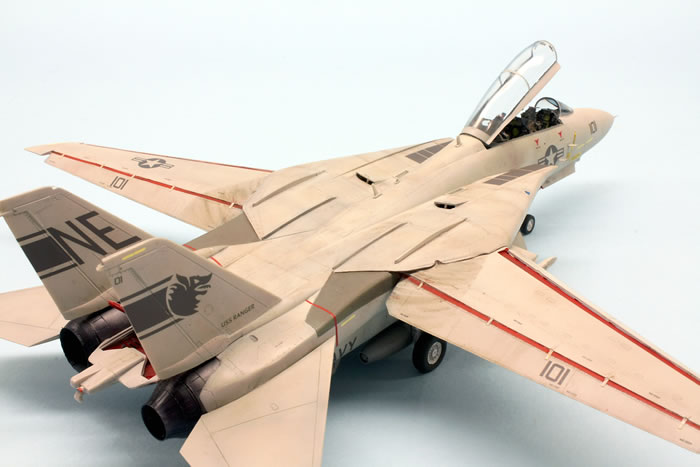
The USS Ranger's operational tours took the carrier unit primarily to the Western Pacific and the Indian Ocean. The F-14A Tomcat shown here is in "low vis" appearance as flown aboard the USS Ranger at the time of the first two operational tours in 1982.
The USS Ranger's operational tours took the carrier group CVW-2 preferentially to the Western Pacific and the Indian Ocean. From these operational areas, the carrier and her two Tomcat units were intensively used to enforce US interests in the Middle East. During the Iran-Iraq war, for example, Iranian oil platforms were attacked in a retaliatory action after ships from Kuwait, which was neutral in the Iran-Iraq war, were sunk by the Iranians. A few years later, VF-1 was also involved in the fighting of the second Gulf War, which broke out in 1991.
Except for a relatively short period in 1984, when the VF-1s were transferred to the USS "Kitty Hawk", the "Rangers" and the "Wolfpack" remained connected. The bond also applied to the honourable end: both the carrier and her Tomcat squadron were to be decommissioned in the same year. The USS Ranger was removed from the lists at the beginning of 1992, the disbanding of VF-1 "Wolfpack", in the meantime operating without a carrier from NAS Miramar, followed at the end of the year.
For this project I reverted to a tried and tested kit: the 1/72 scale F-14 from Hasegawa enjoys a good reputation, although care should be taken to purchase the more complex and detailed edition. The manufacturer has also produced a highly simplified kit, which, among other weaknesses, does not allow the complicated flap mechanism of the pivoting wings to be depicted.
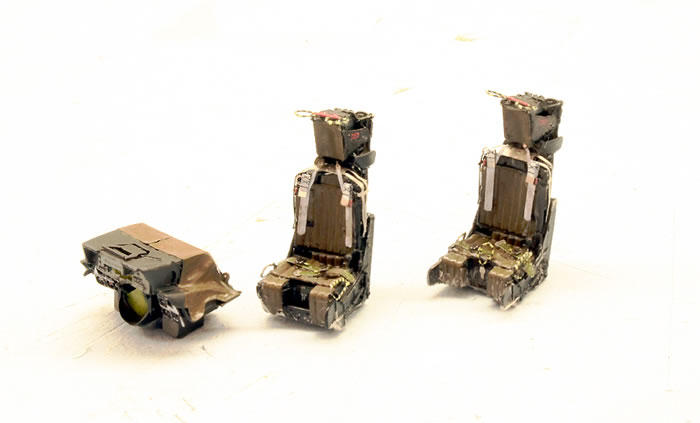
I must admit that I was not very impressed after opening the box. Details on the cockpit and landing gear left a lot to be desired, and a very visible centre seam on the prominent canopy put a damper on my future building pleasure. However: for the cockpit I quickly found a simple solution in the form of a solid resin cockpit from Aires, while the seam on the transparent part provoked a solution of a special kind: forced by the circumstance, I had to start grinding out this ridge anyway; something I had never dared to do before.
To my delight, I can say that this really worked quite well! Beyond the immediate success, it is simply a nice feeling to be able to dare to take on such challenges in the future!
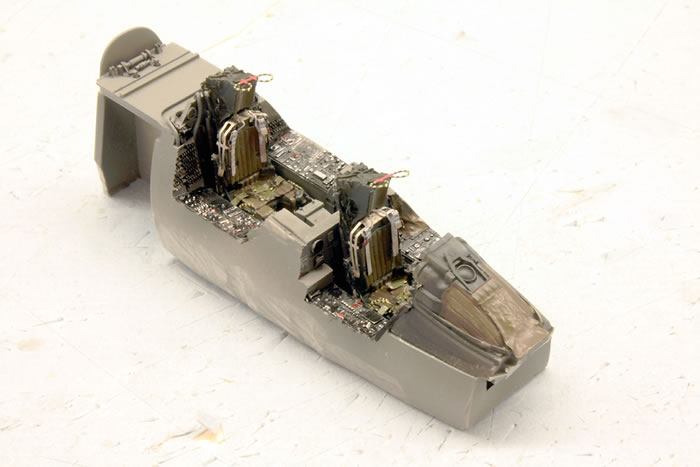
But back to the kit: the somewhat lukewarm first impression deepened after I started building. The accuracy of fit turned out to be not really bad, but almost all gluing points need to be reworked, filled and sanded. A particularly tricky area in this respect was the region around the main landing gear shafts. Here it is necessary to fit, rework, fill and sand very precisely.
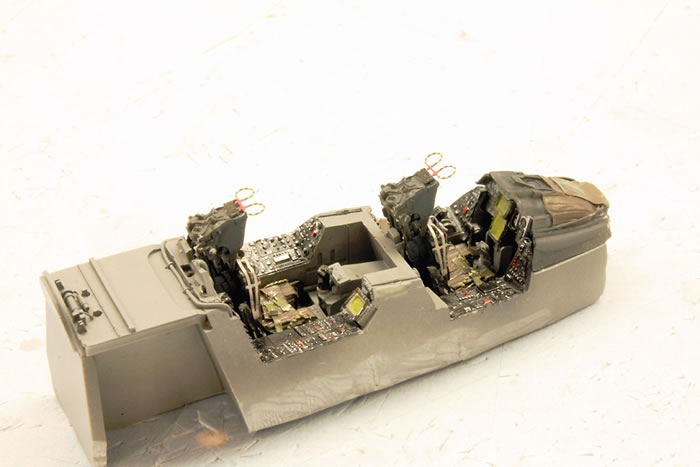
One of the positive aspects of this kit is certainly the possibility to show numerous maintenance flaps, steps or the flap system of the wings in action. However, I only built the extended slats and flaps on the forward pivoted wings.
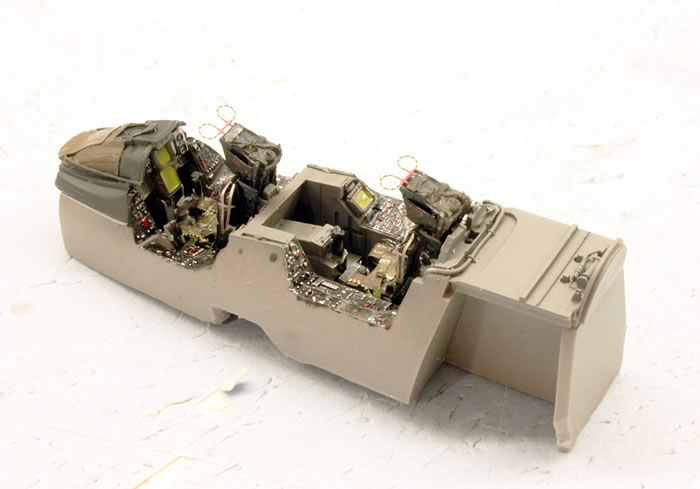
I only replaced the front "A-probe" with a metal part, the various unfitted weapon pylons were completed with the beautiful etched parts from Eduard's helpful "exterior-set".
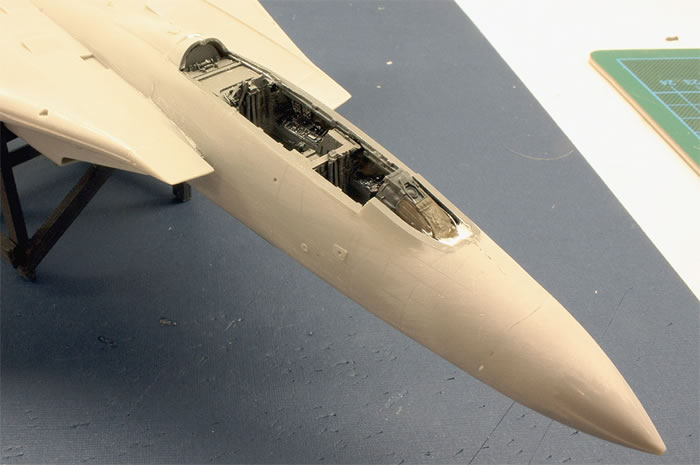
The decals are entirely from the recommendable sheet "U.S. Navy VF-1 Wolfpack" from DXM Decals. The decals were easy and comfortable to apply. They are also of impressive strength with a delicate carrier film and thus, last but not least, create a remarkable realistic impression.
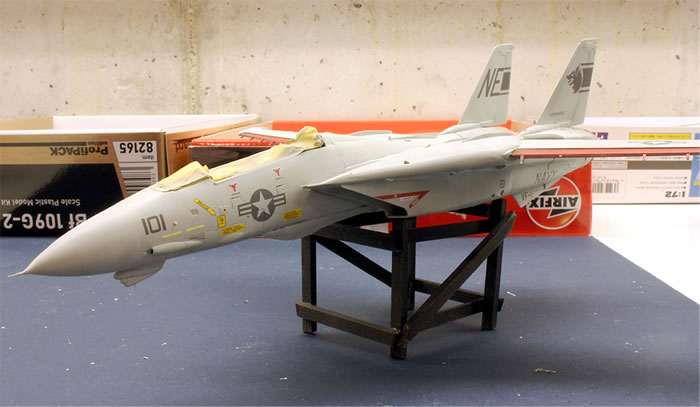
Sufficient traces of dirt and use were finally added to the surfaces thus finished. As can be seen from the original pictures, the exterior of these carrier machines was quickly marked by the interaction of the rough conditions at the salt water and the hard stresses of intensive flight operations. Also impressive on these high-tech machines are the traces of abrasion on the parts of the pivoting wings that retract into the fuselage.
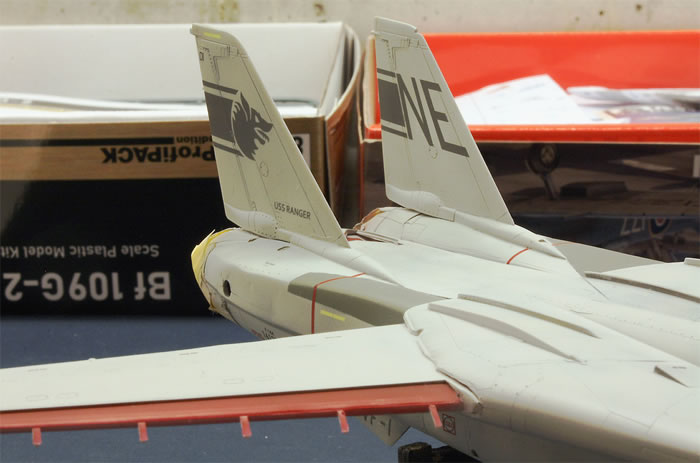
A simple, two-dimensional background and a printed base plate were used for the scenic model photos. The printed material for this comes from the impressive range of "Coastal Kit".
Finally, I may say: even the third F-14 model still knows how to inspire. The Tomcat really does have timelessly beautiful lines and its operational history has many interesting stories to tell - what more could you want from a model?
https://www.scalemates.com/profiles/mate.php?id=10148&p=albums&album=76936
If you are interested in the building process, please have a look here on Scalemates:
As ever, remarks will be appreciated: ro.sachsenhofer@gmx.at
Model, Images and Text Copyright ©
2022 by Roland Sachsenhofer
Page Created 26 April, 2022
Last Updated
28 April, 2022
Back to HyperScale Main Page

|
Home
| What's New | Features | Gallery | Reviews | Reference | Resource Guides | Forum |